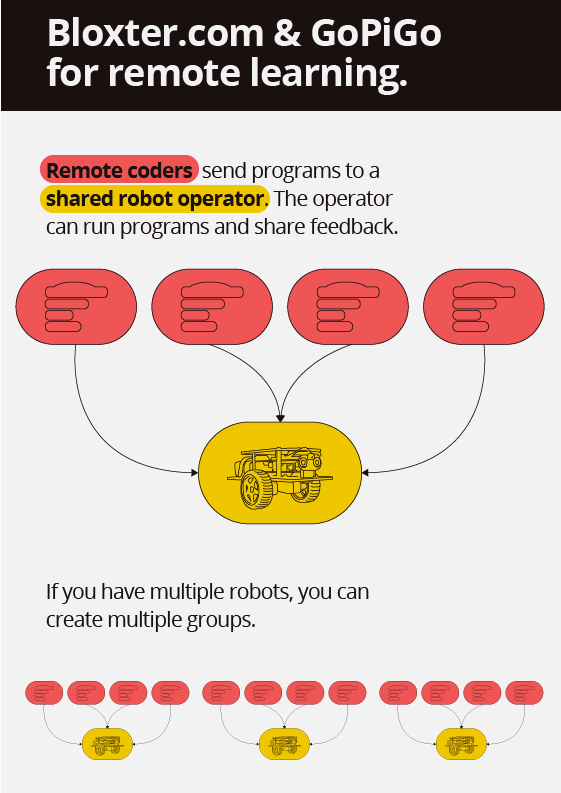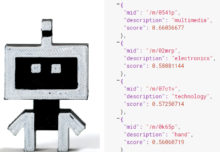Finding ways to make remote learning with robots work.
A huge component of the STEAM and Maker Movements has been bringing people together in shared spaces to use robots and tools that they may not have in their own homes. But side-by-side with you, Modular Robotics has been working hard to figure out how to make remote learning with robotics accessible in our new, stay-at-home world. That’s why we created is Online Bloxter, an online version of DexterOS that enables people who do not have a physical GoPiGo to create their code and then send it to a teacher or center-director who can create a short video of how the robot behaves to send back to the student for iteration.
This means your students who are already familiar with GoPiGo and DexterOS can create code at home without needing their own robot. There are many ways to make this work for your camp or classroom:
Small Group Work
Designate one student as the team facilitator. This student has the robot at home. Other group members send their code to the student facilitator during group video calls. Students can iterate more quickly in this live setting, and this will preserve your instructional bandwidth to stay focused on having conversations with students as opposed to exclusively loading programs to robots on behalf of your students.
Whole Group Learning Community
If you have a robot or two available to you as the instructor, another excellent way to use Online Bloxter is to have individual students or small groups submit one or two examples of code prior to a whole-group live session. During the live stream, make each group’s code visible to the whole class prior to showing how the robot behaves. You can set this up as a practice in giving and receiving feedback and students will have an extra bridge between groups to learn from each other throughout the iteration and design process.
Bloxter.com is our first step toward making robotics more accessible for remote learning. We understand that it includes some limitations since users are required to wait for a livestream session to be able to iterate, but it is one step closer to fully-remote programming for the GoPiGo.
We are continuing to develop remote solutions in the background and will release them as soon as they are available. In the meantime, let us know what you’re up to and how we can more effectively support you!
0 Comments
Leave a reply
You must be logged in to post a comment.







